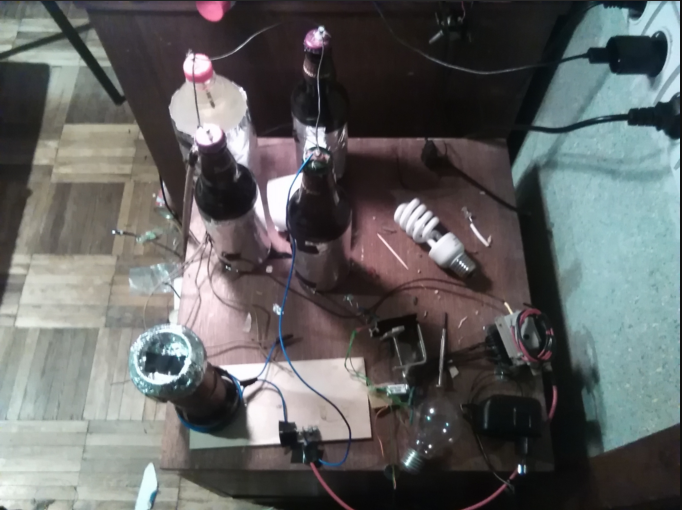viliuks
0
- Joined
- Jun 8, 2015
- Messages
- 44
- Points
- 0
Hello, geekies, I built a tesla coil not long ago with a flyback and some saltwater capacitors.
So lets get to the point, I have saltwater capacitors which I want to change to normal capacitors that I need help determining which ones I need and what would their capacity be.
I got a crummy home made driver for the flyback which I'm going to change out to a ZVS driver.
Flyback is running on 12v DC and will be running the same voltage when I will get the ZVS driver.
Tesla coil specs:
Secondary:
height: 17cm
width: 5cm
wire: 28-32 awg (0.32mm - 0.20 mm) can't remember which one.
Primary is a tad wider about 6-7cm with 3wraps of 3mm wire.
So I need to get how many capacitors I need and what their capacity would be, with the type of capacitor too
If I need to provide anything else tell me. :thanks:
So lets get to the point, I have saltwater capacitors which I want to change to normal capacitors that I need help determining which ones I need and what would their capacity be.
I got a crummy home made driver for the flyback which I'm going to change out to a ZVS driver.
Flyback is running on 12v DC and will be running the same voltage when I will get the ZVS driver.
Tesla coil specs:
Secondary:
height: 17cm
width: 5cm
wire: 28-32 awg (0.32mm - 0.20 mm) can't remember which one.
Primary is a tad wider about 6-7cm with 3wraps of 3mm wire.
So I need to get how many capacitors I need and what their capacity would be, with the type of capacitor too
If I need to provide anything else tell me. :thanks:
Last edited:





